
Distortion Dishing The Dirt
Keep it clean? Or get down ‘n’ dirty? A bit of grit and grime goes a long way.
I’ve been waiting for someone to write an article about distortion in this learned mag for a fair while now. Finally I’ve decided I’d better do it myself since no one else wanted to be get down and dirty, so here it is. I’d like to preface this by saying that I can’t go into as much detail as I’d like to about the technical aspects of distortion – even- and odd-order harmonics, that sort of thing – that’s not really my forte. I play, record and mix music just about every day of my life and have done so for many years so I’ll approach the subject of distortion from the point of the user/addict: what it’s good for, and most importantly, how to go about generating and using it in tracking and mixing for the betterment of your music.
Over the years I’ve collected techniques for distorting sounds the way a cook might collect recipes and I’d have to say that in the last five years or so we’ve entered into something of a golden age of distortion, given how many great tools are now available for the purpose of driving our sounds into heartwarming fuzz!
HUMBLE BEGINNINGS
The counter argument to this of course is that we may never quite recapture the halo of awesomeness that surrounds the great recordings of the first half of the 20th century, when the limitations in bandwidth and signal-to-noise ratios imposed by the recording and playback equipment of the time caused engineers to push the limits of their gear (while no doubt cursing it roundly) and give us digital-age listeners so much nostalgic joy.
This is how the ‘language’ of musical distortion was born – the singer or the trumpet player hitting the big notes and starting to break up on the wire recorder or wax cylinder because levels had to be set high enough to catch the quieter passages. Over the years we came to hear that break-up as a particular sign of musical intensity – listen to Robert Johnson pinning the needles on his recordings and you’ll hear the sound that shaped everything from Hendrix to House and beyond. Distortion was good! The intensity of it made you feel alive!
When designers of guitar amps stopped fighting distortion and turned it into a selling point in the late ’50s and early ’60s, rock ‘n’ roll was born and we’ve been breaking up ever since. Recording equipment designers (who were often engineers, producers and A&R men for their own labels as well) spent these early days of rock ‘n’ roll building bigger and better designs, always with the aim of eliminating as much distortion from the signal path as possible. It is a significant irony that in our digital era their most sought after products are the early ones where that pesky distortion was still playing a significant role in their sound.
As tape, transformers and tubes started biting the dust in the ’80s and ’90s and signal paths became more and more pristine, engineers and producers increasingly turned to these earlier mic pres and compressors to find the grit and warmth that suddenly seemed lacking. At roughly the same time all over the world, it was felt by many recordists that some valve or transformer distortion needed to be re-introduced to the signal path to make their recordings ring true. This is one of the reasons why you can no longer buy a Neve console full of 1073s at a studio closing down sale for $200!
In my opinion we’re now in a new phase where a large number of designers have catered to this need. There are now faithful re-issues of the classics, some very clever new warmth and distortion circuits built into hardware devices, and an ever more musical and flexible range of software emulations and innovations that make the issue of distortion not so much a problem of generation as one of multiple choice.


THE MODERN DISTORTER’S TOOLKIT
Okay, so what are our choices now? We can talk about analogue versus digital but I tend to think the axis falls just as importantly between subtle and overt kinds of distortion. Subtle distortion imbues an instrument or an entire mix with extra body, punch, weight, cut, fizz… without completely re-imagining the original sounds. Overt distortion takes more extreme steps and essentially allows a drum kit, synth, vocal or entire mix to bleed all over the furniture. Both approaches are totally valid and useful, depending on the material, though I’d say subtle distortion is the more bread and butter approach of the two for most musical styles, so let’s look at that in a little more depth.
MIX BUS DISTORTION: ON THE RAILS
At the top of the tree in the subtle distortion stakes is the sound of the mix bus of a large format console being run fairly hot – i.e. with plenty of gain and thus voltage running through the rails. Classic examples of this are the vintage Neve and SSL consoles where the bewildering array of PCBs, wires, capacitors, transformers and resistors really do add up to something. This sound is pretty much synonymous with the majority of expensive pop and rock productions of the last 20 years – the SSL is the weapon of choice of Hip Hop and R&B producers and the Neve takes most of the rock dogs to their preferred mix bus heaven. This subtle yet transformative distortion is pleasing, powerful and exceptionally musical. It adds weight, definition and punch to drums, guitars and vocals as well as anything else it encounters. It is also undeniably the most expensive sort of distortion to access, making it the subject of endless forum geek drool. Enough said. If you or your client can afford this euphonic thrill make the most of it and get stuck in!
Overt distortion takes more extreme steps and essentially allows a drum kit, synth, vocal or entire mix to bleed all over the furniture
COMPRESSORS: PUSH HARD
Next stop along the trail is the high quality outboard compressor. ‘But a compressor is not a distortion device!’ I hear you say. Actually a lot of the more popular models can be driven into distortion very easily and are regularly used for precisely this purpose. The flipside of this statement of course is that distortion tends to compress things… but more on that later. My personal favourite at the moment for dirty compression is the API 525 but there are many candidates including – you guessed it – compressors by Neve and SSL as well as EMI, Chandler and the ubiquitous Universal Audio / Urei 1176LN and the ELI Distressor. What all these compressors share is the ability to add distortion as you drive them harder. They can be made to seriously mash things up but if you wish to be subtle you have a choice. You can either drive them moderately and enjoy the slight blurring of transients and the magnification of tone that results, or you can monster the signal. You can then run this signal in parallel with an uncompressed signal and blend the two together to get the thump, crash and wallop sitting in behind the more transparent version and mix to taste, or better still, ride them up and down in the mix to enhance the track’s dynamics. Special mention here must go to the Al Smart C2 stereo compressor with its ‘Crush’ button, which adds tasty euphonic distortion and a generous dollop of extra presence. A low price alternative to this is the Shure SE30, a mono mic/line location mixer, the compressor inside of which goes burko at the drop of a hat! For perhaps the clearest example of this compressor/distortion effect in recent times, check out the drum sound on the first song on Radiohead’s OK Computer album, Airbag.
OUTBOARD ‘DRIVE’
Another outboard solution that’s very much the fashion these days is the outboard mic preamp with ‘drive’, ‘warmth’, ‘saturation’ or similar such control thrown in. These range from very ordinary to great sounding, so you need to audition them before buying. The best of these I’ve heard lately was on the Summit Everest channel strip I reviewed in Issue 68. It’s a pricey bit of gear but the knob actually works and makes things sound more saturated, beefy and pleasantly crusty. Beware of ‘starved-plate’ cheaper designs that are inevitably marketed as ‘tube warmth’ circuits, but which generally sound fairly lame. As always, with outboard gear, you get what you pay for! Another great studio staple is the hardware Tech 21 SansAmp processor, a dedicated distortion generator that can handle nasty and nice and gives you a lot of control over your tone as well.

CHEAPER OPTIONS
Sorry if all this talk of expensive gear is getting you down. Hang in there, we’re now getting to the exciting bit – where you just use what you’ve already got and make it do something dirty!
Let’s say you’ve got one decent condenser mic and a decent mic pre. What you’ve now got to do is turn it up full bore and overload it, whether you’re recording a vocal, drum room or harpsichord solo. If it sounds awful, back it off until it’s just slightly blowing out on the louder passages. Got an old analogue mixer lying around? Try parallel processing a source through two channels, one set at moderate levels and one set to go bananas (possibly even gained up through one channel and fed back into another), then mix the two together in your DAW or tape machine. This actually works – analogue mic pres and line amps can distort beautifully on the right source and if you can get the signal to sit just on the edge of distortion it adds a nice bit of menace to a performance without falling into the sometimes-clichéd territory of full-on distortion treatments. You can also plug an electric guitar straight into a console or mic pre and do this – just ask Keith Richards.
Recording parallel inputs means if you stuff up your levels or change your mind later, you’ve got a clean option to fall back on. You can also do this through an old cassette deck or tape machine and take a direct output from there, or you can print to tape at very hot levels (by the way, don’t try to overdrive your DAW’s inputs, as digital distortion is foul and only to be used for the most violent and nasty tone generation). Last, but not least, there’s your trusty old guitar pedals. Many’s the time I’ve walked into an expensive studio full of top-notch gear only to see a cheap guitar pedal taking pride of place on top of the racks with a vocal or snare drum going through it. The rule here is that there really are no rules and you shouldn’t neglect your most basic tools just because they haven’t set you back a couple of grand.
RE-AMP: FIX IT IN POST
Of all the potential means of distortion this one is probably the most time honoured – feed your clean signal back through a guitar or other amplifier and dial in the amount of grit, bite, thump or fuzz required and put a mic in front of it. There are several variations on this theme; take the output of your mic pre direct into an amp or record it clean and re-amp after the event, split the output and record one straight to DAW/tape and the other to an amp, mic the amp but also take the direct line out of your amp back to your recorder etc.
The two issues here are impedance and phase. Impedance problems arise when feeding a high line-level output into a lo-Z input such as an amplifier, which can be remedied by using one of the various re-amping boxes available for this purpose. You can also simply attenuate your levels via a bus send and put up with the existing impedance mismatch.
Phase, however, is trickier. It can be hard to perfectly phase match a clean and distorted signal when there’s a time delay of any sort. (When you record both a direct source and one that’s been miked, there will always be a delay because of the extra time the sound takes to travel through the air from amp to microphone). Even when you use the ‘click trick’ (recording a very short sound with an abrupt attack at the start of the recording and later match these waveform peaks up in your DAW by eye), things can be somewhat uncertain. Matching peaks can work but at other times it can be a matter of choosing the best-sounding phase arrangement and getting creative with the filtering effects these naturally offer.
I’ve walked into an expensive studio full of top-notch gear only to see a cheap guitar pedal taking pride of place on top of the racks
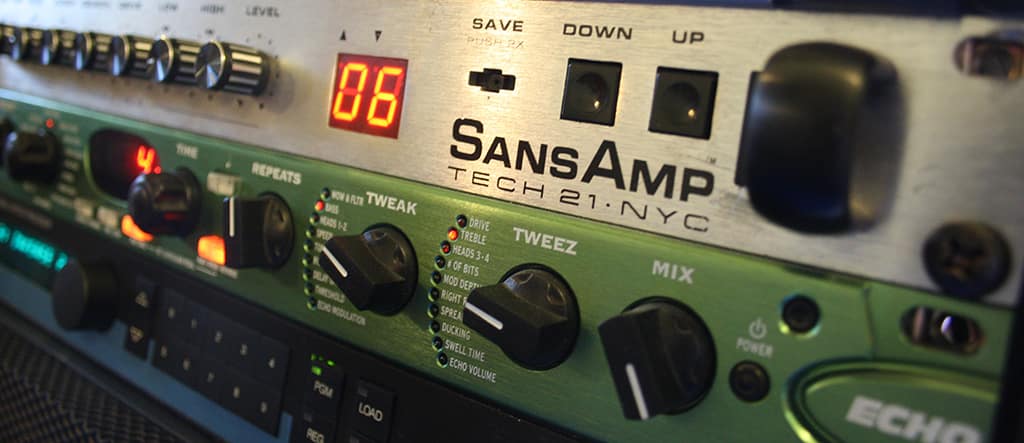
TIME TO PLUG-IN
It’s in the digital realm where things have really improved in recent times. As a lesser ProTools LE user I survived the lean years on the venerable SansAmp plug-in and little else – it was, and is, actually pretty cool but these days I can spot the sound of it a mile off and I dare say many of you can too.
Today the choices are quite staggering. These include great emulations of specific amps, speakers and microphone responses as well as valve and transformer circuits. There are tape saturation devices, emulations of the above-mentioned compressors as well as numerous other classic bits of outboard. There are also great effects to be enjoyed by applying various bit-degradation plug-ins to your tracks and/or running them through dedicated synth and sequencer distortion algorithms. There are great offerings from companies such as URS, UA, Waves, McDSP, IK Multimedia, SPL, Native Instruments, PSP… the list goes on. You can often download a demo version to try before you buy – another great thing about the digital age.
Keep an ear out for phase anomalies when parallel processing in the digital realm, however, as plug-in processing delays can ruin a good sound without you necessarily being aware of it. If you’ve got access to accurate plug-in delay compensation it makes things much easier. The problem I still find with a lot of plug-in distortions is that they excel at big crazy stuff but don’t quite hit the mark when it comes to more subtle settings. Another couple of years will probably make all the difference in this area, if all the noticeable improvement in realism that are going on in the plug-in industry in general are anything to go by. Time will tell.
Andy Stewart talks dirty:
I couldn’t resist adding another concept here to Greg’s comprehensive list of distortion techniques. I promise I’ll be brief.
What so many engineers and musicians neglect to do in the studio is record things with distortion during a tracking session. Obviously I’m not talking about electric guitars here or simply running a tape machine for that bit of extra tape saturation, I’m talking about recording voices, pianos, horns, acoustic stringed instruments etc – sounds that are commonly tracked pristinely through special mics using classic recording techniques – in ways that are often scarcely considered.
Greg alluded to this in the main body of the article but the specific concept I want to make mention of is the technique of recording instruments through distortion devices like guitar amplifiers, in the room at the time of the performance. Again, this may not seem all that special, and re-amping is something that happens all the time during mixing sessions. But re-amping an instrument later is not the same idea at all.
The distinction to make here – which is often lost in the endless discussions about re-amping – is that a totally different sound can be achieved when the instrument being recorded is live in the room with the amp that’s distorting it. You may be two or 20 feet away, it’s up to you. The idea here is to experiment with sound… that’s what recording studios are all about. Then once you’ve got something sounding awesomely distorted, track it on the spot!
Say you’re recording a messed up acoustic guitar track. The idea with this technique is to mic up the instrument in whatever way you fancy, and these then plug into preamps positioned in the recording space with the performer. The outputs of these preamps are then fed directly to an amp – perhaps a Marshall stack that’s already miked up, who knows. The mics on the instrument aren’t going into the control room and back or via a split into a DAW etc – they’re feeding straight into the amp. The idea is to then simply record only the miked up amp. Now, depending on the volume of this amp, the sound will start to feed back courtesy of the instrument mics that are set up beside it, behind it, nearby or down the hall. The difference with this technique is the instrument in the room affects the sound at the amp, and it all happens live. It also means there’s a little or a lot of the original sound spilling into the amp mic directly from the source.
It’s a different sound with a different attitude, one that usually has a significantly different affect on the players and the vibe of the performance. Why re-amp it later when you can do it all on the spot!
MUCK IN
Okay, so we’ve canvassed a smorgasbord of distortion options but what are we meant to do with all this dirt? Here’s my list of favourite distortion duties in no particular order:
Bass guitar: Can’t get your bass track to punch through the mix? I remember years ago hearing a track by Martin Craft that had the most fantastically smooth and articulate bass sound I’d heard in ages. It was clear and defined but very funky sounding, and to my ears, very clean sounding too. Imagine my surprise then when he soloed it for me and it was as furry as a tennis ball in a dog kennel. In a dense track with lots of guitars, drums etc, a bit (or a lot) of fuzz can really lift a bass sound as well as smoothing it out courtesy of distortion’s natural tendency to compress a sound’s dynamics. If you get it right, this approach lets the attack of the notes punch through sweetly without you really being aware of the sonic mayhem underneath.
Drums: This could be a two pager in its own right but here are some basic thoughts. It’s a favourite of many engineers to compress the crap out of drum room mics with compressors, effectively squashing them into distortion to give a kit more energy. I also favour the approach of just sending kick, snare and toms into a dirty comp or an amp or a software distortion plug-in and pushing up the bottom-end EQ. You can get a small dry kit to sound monstrous very quickly this way, and if you crank up the drive it will start to lengthen the decay of the hits, producing a kind of artificial room sound to boot. The advantage of this is you don’t turn the cymbals into such a wash of white noise. Of course, parallel processing of the whole kit gets you that more bombastic cymbal action which can be great for no-holds-barred assault.
For a more spooky approach, try just using the distorted signal on its own and rolling most of the tops out. This is great for more atmospheric tracks and leaves tons of space for other instruments. Alternatively, treat the drums with several different distortion and EQ approaches and print them all to separate tracks and then cut between them for fills and different sections. I’ve had heaps of joy doing this on some electro projects; it keeps things sounding fresh indeed.
Vocals: Distorted vocals can sound great or they can get a bit tiring after half a song, which is why you often hear distortion used just in certain parts of a song. Try parallel processing for some subtlety, or just distort a duplicate of the vocal to send to your reverb, or distort the double, or the delay! EQ the crap out of the distorted version to just catch certain frequencies in the voice and run that under the clean track. Distortion on backing vocals is cool too and lets them punch through at lower levels. There’s also another way of using distortion here, which is to feed a distorted version of the signal back into the singer’s headphones – you’ll notice a big difference in how they approach a performance and you don’t necessarily have to keep the fuzz later on. For a great vocal distortion sound check out some of the Strokes recordings where the vox was done live in the main room through a PA… just a little bit of grit and drive and tons of spill – lovely!
Keyboards & Synths: I guess this is essentially like the concept of distorting a guitar except that keys seem to get tracked clean more often as a basic studio strategy. It’s common to see people adding grit and drive to keyboard sounds in order to make them sit up in a mix. Organ sounds in particular are classic for sounding great when you’re tracking but a bit dull and lifeless in the mix as other elements get pumped up. Again, some moderate distortion followed by aggressive EQ can really pick out the best frequencies and make things come to life. Most synths worth their salt these days have some kind of distortion built in via a dedicated control or a combination of pulse width modulation and noise generators. Aggressive square wave leads and ginormous synth bass lines seasoned with distortion have been a way of life in dance music for decades now and so on it will go – just check out the presets in any modern synth. It’s all been done for you!
Horns: Horns can benefit from a bit of dirt to give them a more aggressive character and also to get them to feel more like a section than a bunch of separate overdub tracks. This can also be great for extracting maximum bottom end and generally exaggerating their tonality a bit.
The Mix Bus: Like all distortion applications this can be a bit hit and miss, but when it works it’s potentially very fun. Hitting an expensive analogue console hard can be a great experience akin to driving a Porsche, and rarely disappoints, but there are other ways and means as we have seen. One of the recordings I still often get comments about is a C.W. Stoneking album where we went for a really old-time sound. A lot of the power in these sounds came from C.W.’s own performance of course, which was fantastic and a joy to capture, but we also decided to do a little re-amping. The secret sauce on that record was sending the whole mix in mono into an el-cheapo ‘Zenith’ practice amp and remiking it with an old banger of a ribbon mic. That was the sound, although interestingly it only worked on some songs and not others.
OVER THE LIMIT
Okay, I haven’t mentioned resampling sounds through your ’80s Akai gear or mechanical distortion effects like putting strips of paper in your snare or weaving bits of wire through your guitar strings at the bridge or rubbing wine glasses while wobbling them around the soundboard of a detuned piano soundboard, but some things need to be discovered by sheer trial and error and I’m way over my word count already. Hope all this helps you dish the dirt on your sounds and keeps you from falling into lazy default mode. Happy distorting!






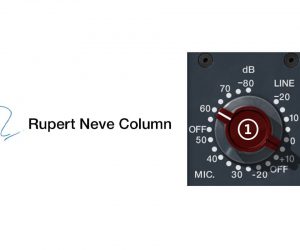
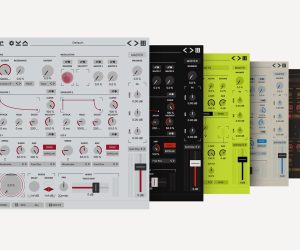
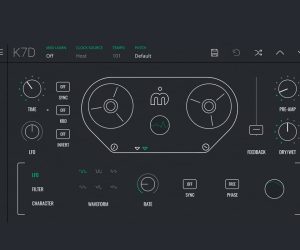
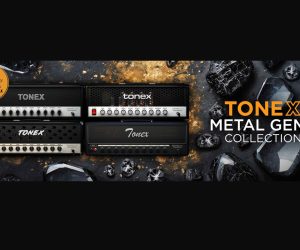






RESPONSES